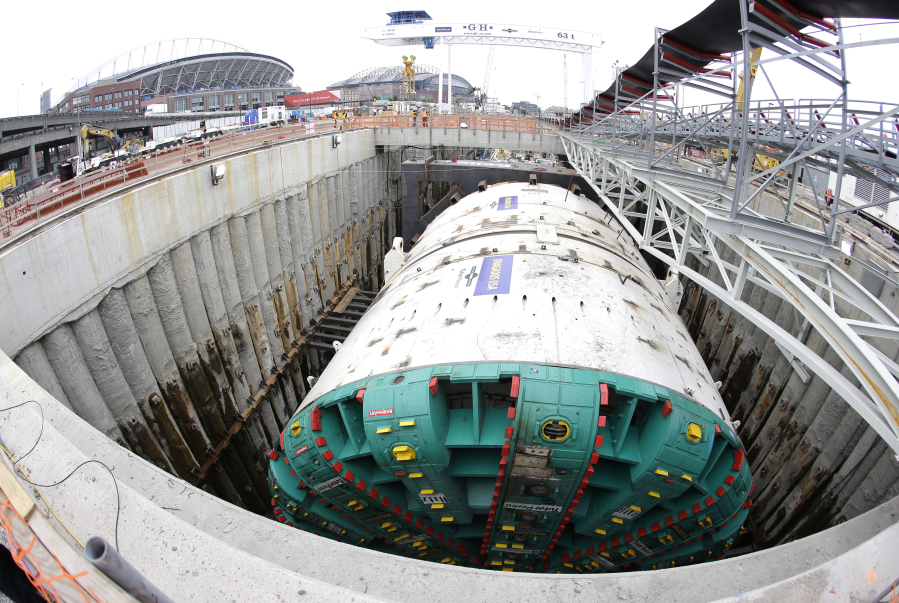SEATTLE — Hard to believe it’s already been eight years since Bertha, the world’s largest tunnel-boring machine, stalled below the Seattle waterfront, throwing the entire city into suspense about whether contractors would ever break into daylight.
The Highway 99 tunnel did open in early 2019, and has now generated another milestone: a photo retrospective that’s a hefty 3 pounds and 190 pages.
“Supertunnel: From Light to Light” is a self-published collection by Catherine Bassetti, the project’s official photographer, that celebrates the epic feat of building the 53 1/3-foot-diameter tube, 2 miles from Sodo to South Lake Union.
“My hope is that readers can sense the magnitude of dedicated labor and engineering that built Seattle’s new tunnel,” she writes. The pictures will spark memories for tunneling fans, or anyone explaining the giant tube to visitors.
Bassetti underwent safety trainings and became friends with tunnel forepersons and laborers, gaining access deep inside. Many of them wrote short reflections for pages between the photos. The book provides some fresh images, such as close-ups of workers assembling the concrete rings, beyond areas available to local news media.
In a stunning image, Bassetti leaned off a catwalk over a 120-foot-deep vault, where Bertha’s damaged front end was being repaired and strengthened, to shoot straight down at the cutting disc and new steel teeth, tinged gold by some rare winter sunshine.
“That was fabulous. I can’t believe I didn’t die, I didn’t even get dizzy or anything” she recalls. “My problem was trying to make sure my hardhat didn’t fall off and hurt anybody.”
Another memorable chapter features construction divers, working in four times atmospheric pressure. They replaced the 75-pound steel teeth, then rested for hours in the decompression chamber. “Even though you couldn’t see too far below, you knew it was 60 feet down. When something like a piece of rock fell, you could definitely hear it hit the water way down there. It didn’t feel so high because it was so dark in there,” writes worker Cody Heck.
Control-room operators are pictured, taking pride in their post-repair success. Soil settlement was nearly too minute to measure beneath downtown buildings, the result of accurate steering and soil measurement.
By now, the $3.3 billion, four-lane tunnel has become largely an afterthought during the COVID-19 pandemic, when telework halved the normal 75,000 daily vehicle trips, and volumes remain low.
The tunnel is fulfilling its mission to reliably carry cars past downtown, replacing noise and shadows from the old Alaskan Way Viaduct. Only a few minor leaks and pavement gouges appeared and were fixed under warranty.



